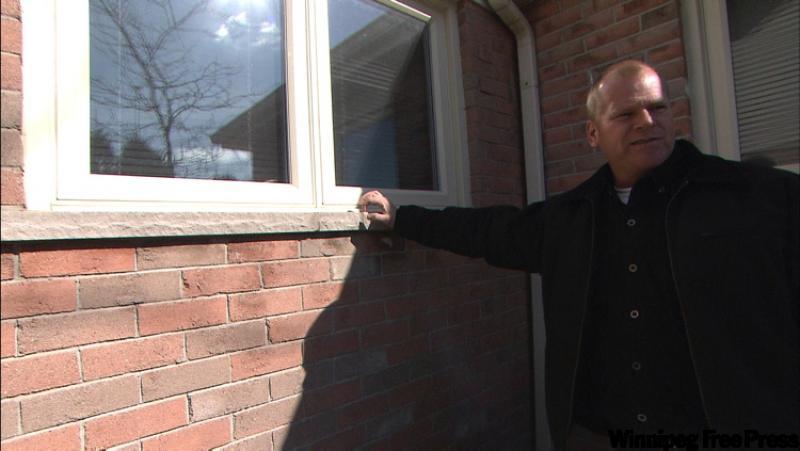I understand the appeal of a traditional brick home. For a lot of people, it's a classic look they appreciate and want to have in their new homes.
But people should understand that a "brick" house isn't solid brick; it isn't the double brick construction of the past. The brick is just an exterior sheathing, used in pretty much the same way that siding or stucco is -- to cover the frame structure.
The brick is vulnerable to the elements when exposed over time to rain, snow, freeze and thaw cycles. It can spall and crumble and, in a surprisingly short time, need repair or replacement. This is especially true if the brick is used too close to grade, or, in the case of one of my pet peeves, in windowsills.
I don't like brick windowsills. Period.
I don't know why homebuilders use brick exterior sills, or why homeowners don't insist on a different product being used. I don't know how many times I've seen houses with brick sills that are a crumbling mess.
If you think about what a windowsill is supposed to do, it makes very little sense to have them made of brick. An exterior windowsill is partly decorative -- it helps set off the window -- but its purpose is to divert water away from the window and keep it from flowing back into your house.
It provides a drainage plane; water will flow off it and drip to the ground. A window has precipitation hitting it, and as it's glass, all the moisture will sheet off; none is absorbed. It all ends up on the windowsill. A windowsill is supposed to be pitched to a degree to allow the water to drip off away from the exterior walls of your house. That's why the sill projects out -- and ideally it's a few inches out.
Brick is porous, and the mortar that bricks are set in is even more porous. When water sits on either of them, it will soak in. Period. And, as the sill is pretty much horizontal, water will sit there before it drains.
There's a perfect spot for water to gather in every one of the mortar joints between the bricks. Brick sills are a perfect way for moisture to infiltrate behind the exterior sheathing of your home.
That, in itself, is dangerous, because water penetration -- if it gets inside your wall to the framing or interior -- will lead to mould. But in a climate with a freeze-thaw cycle, the brick and mortar are very vulnerable to rapid expansion and contraction, which will cause it to crumble in a surprisingly short time.
Brick sills are one of the most vulnerable masonry areas of your home.
I prefer windowsills made from precast concrete, especially if it's in one solid piece rather than two shorter ones with a joint between. The mortar joint is always where the problem will start.
Mortar is the standard product to use when filling joints, but I prefer to use caulk on the top surface of the mortar. Fill the top section of the joint with a high-quality rubberized caulking. That will protect against any water entering the sill and infiltrating behind the sheathing. (It's a good idea to caulk your brick windowsills at the joints as well, by the way.)
Precast sills also have a drip groove chiselled in on the underside of the sill. This groove stops water from travelling back into your walls along the bottom surface; when it reaches the channel, it drips off.
There are other materials that are used for windowsills, depending on the style of home, budget and homeowner's taste. Apart from brick or concrete, natural stone like slate, limestone or granite can be used. The best part about a stone sill is that it usually has no joints, so water is less likely to penetrate.
Make sure your windowsills are properly caulked and flashed, regardless of what they are made of. It's also essential to make sure they are sloped -- at around 15 degrees -- away from the window to make sure water drains away from your house.
Catch Mike in his brand-new series, Holmes Inspection, airing Thursdays at 7 p.m. CT on HGTV. For more information, visit www.hgtv.ca.
-- Canwest News Service




